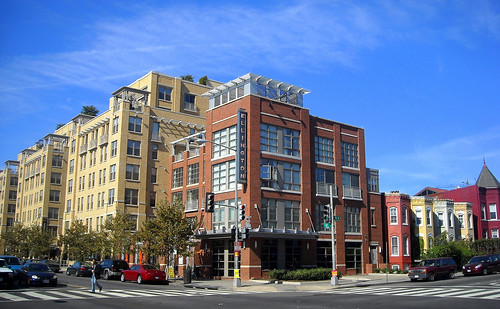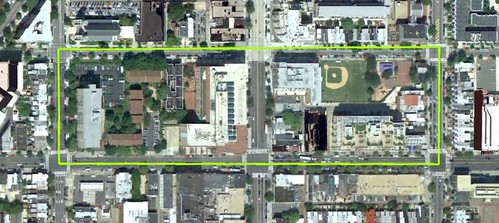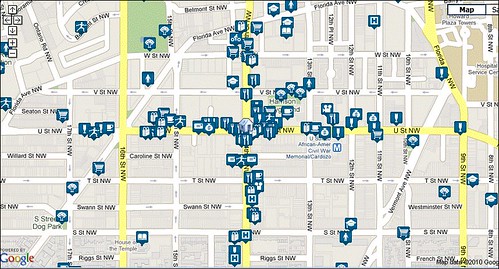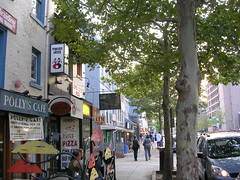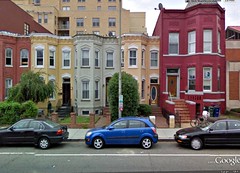Living City Block, retrofitting a DC neighborhood to become an environmental model

Posted December 8, 2010 at 1:55PM
Having already begun a comprehensive energy and environmental retrofit of a key part of Denver’s Lower Downtown, the nonprofit organization Living City Block is now looking to do the same in a neighborhood in the heart of Washington, DC. It is a fantastic project that stands to become a model for the greening of mixed-use urban neighborhoods across the country.
The DC location is one of the city’s hottest, a two-block stretch in the heart of the recently revitalized (and still revitalizing) U Street, NW corridor. The neighborhood is home to new and historic condos, Victorian rowhouses, shops, restaurants, music clubs, galleries, and the Frank D. Reeves Municipal Center, one of the DC government’s largest and most visible administrative buildings.
The project site is a two-block parcel bounded by U Street to the south, V Street to the north, and 13th and 15th Streets to the east and west, respectively. In addition to the uses mentioned above, the site also includes two affordable multifamily housing buildings, the Walker Memorial Baptist Church, and the Harrison Recreation Center and playing fields. The combined floor space of the blocks’ buildings exceeds a million square feet.
It is a prime location environmentally, highly walkable and served by multiple rail and bus transit lines: its Walk Score is 98 out of a possible 100, and its Transit Score is 97 out of 100. You literally can’t be much better than that. But wait, there’s more: the Center for Neighborhood Technology’s Abogo transportation calculator indicates that residents living on or near the Living City Block site generate, on average, only 40 percent as much carbon emissions from transportation as do average residents of the Washington metro region, because they drive less; their average household expenditures for transportation are 35 percent less than the regional average.
In other words, a neighborhood that is already very good environmentally because of its location, walkability and use diversity is now poised to become not just good but great.
Living City Block is currently engaged with building and business owners, residents, civic and neighborhood associations, and the DC city government to transform the site into a model of energy and resource efficiency, all while preserving the current buildings, uses, and neighborhood character. Indeed, because many of the buildings are 50 to 100 years old, the project will also strive to confirm the viability of combining today’s state-of-the-art energy efficiency and renewable energy generation technology with historic preservation.
The goals the project hopes to achieve are nothing if not ambitious: 50 percent block-wide energy use reduction by 2013; 75 percent reduction by 2015; and at least two ‘net-zero” demonstration buildings by 2017. In addition, Living City Block will seize opportunities for green roofs, green stormwater infrastructure, organic community gardening and other green improvements. Beyond specific environmental goals, the organization hopes to use the process of civic engagement and environmental upgrading to help the local community create a stronger sense of place, and to strengthen the foundation for a green economy in the area.
As a result of my writing about the Denver project earlier this year, I was contacted by Living City Block CEO Llewellyn Wells and invited to participate in a two-day charrette on the potential of the DC site yesterday and today. 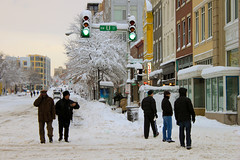 So far I am very impressed with the organization's vision, feel for process, and preparation.
So far I am very impressed with the organization's vision, feel for process, and preparation.
If the project is done right, with inclusion and community influence as well as environmental sophistication, it has the potential to be transformative well beyond the site, particularly because of the U Street neighborhood’s local prominence, anchored by a rich and sometimes troubled history. In the 1920s, it was informally known as the “Black Broadway,” a phrase attributed in Wikipedia to the late singer Pearl Bailey, because of its wealth of entertainment venues catering to African Americans. The renowned late pianist and band leader Duke Ellington was born in the neighborhood. But in 1968 it was badly damaged by days of rioting in the wake of the assassination of Dr. Martin Luther King, Jr. The neighborhood was then largely abandoned by business and became a center for drug trafficking.
Revitalization finally began in the late 1980s with the construction of the Reeves Center, deliberately located by the DC government at 14th and U as a catalyst for and symbol of the aera’s rebirth, 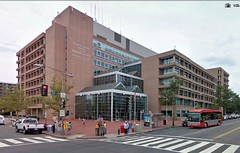 and the opening of a Metrorail transit station a block away at 13th and U. Now it is once again one of the city’s most popular neighborhoods, with gentrification perhaps its greatest challenge. While a real issue that must be deal with, that’s a much better problem to have than the severe disinvestment and deterioration that was once the location’s hallmark.
and the opening of a Metrorail transit station a block away at 13th and U. Now it is once again one of the city’s most popular neighborhoods, with gentrification perhaps its greatest challenge. While a real issue that must be deal with, that’s a much better problem to have than the severe disinvestment and deterioration that was once the location’s hallmark.
Living City Block believes that small to medium-sized commercial and multifamily buildings such as those that characterize the site are typically unable to undertake environmental retrofits on their own and that, by aggregating the interests of diverse property owners and residents, stakeholders can achieve the buying power and risk mitigation that comes with scale. The results will offer lessons for others interested in doing the same. Wells says that "Living City Block DC 14th & U will be a laboratory and proof of concept demonstration project wherein we solidify the foundational skills, tools, models, knowledge, and processes necessary for the broader mission of regional urban regeneration."
What a terrific set of aspirations. I’m looking forward to following their progress.
Move your cursor over the images for credit information.
